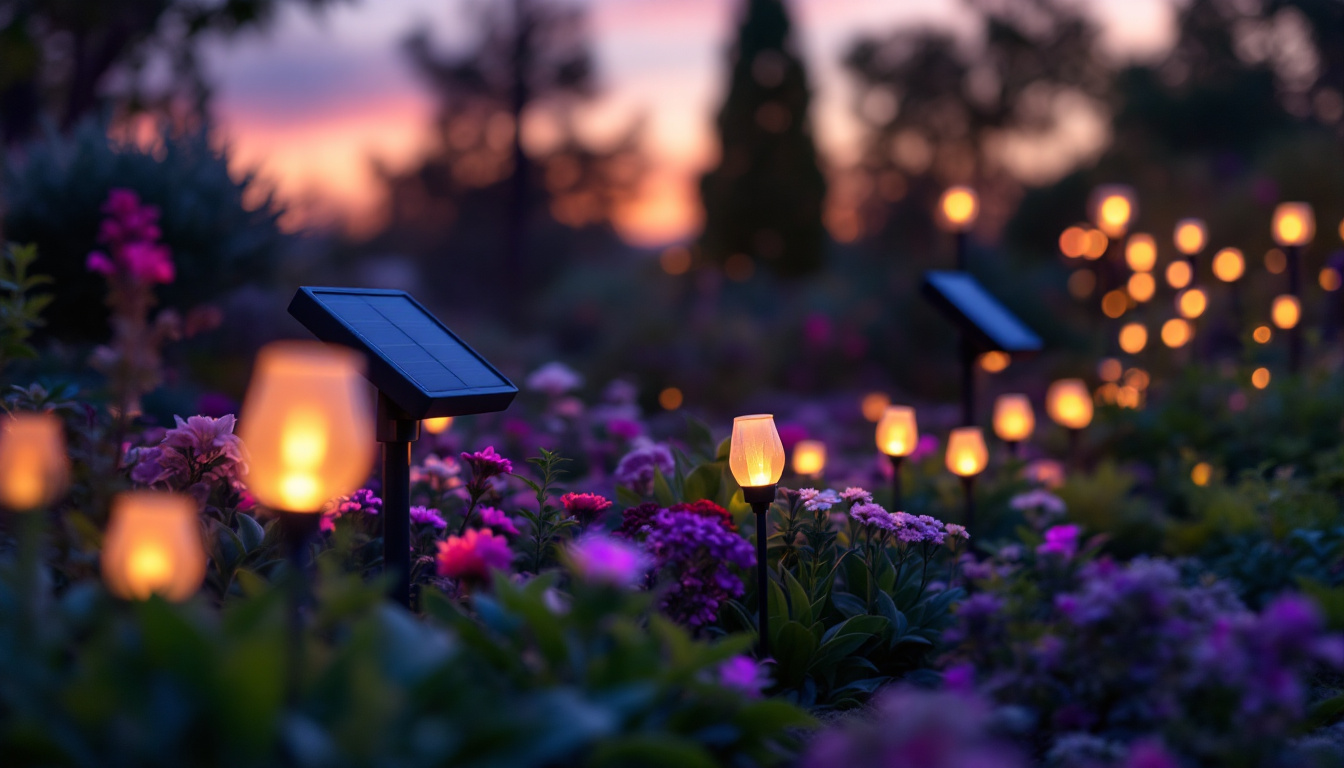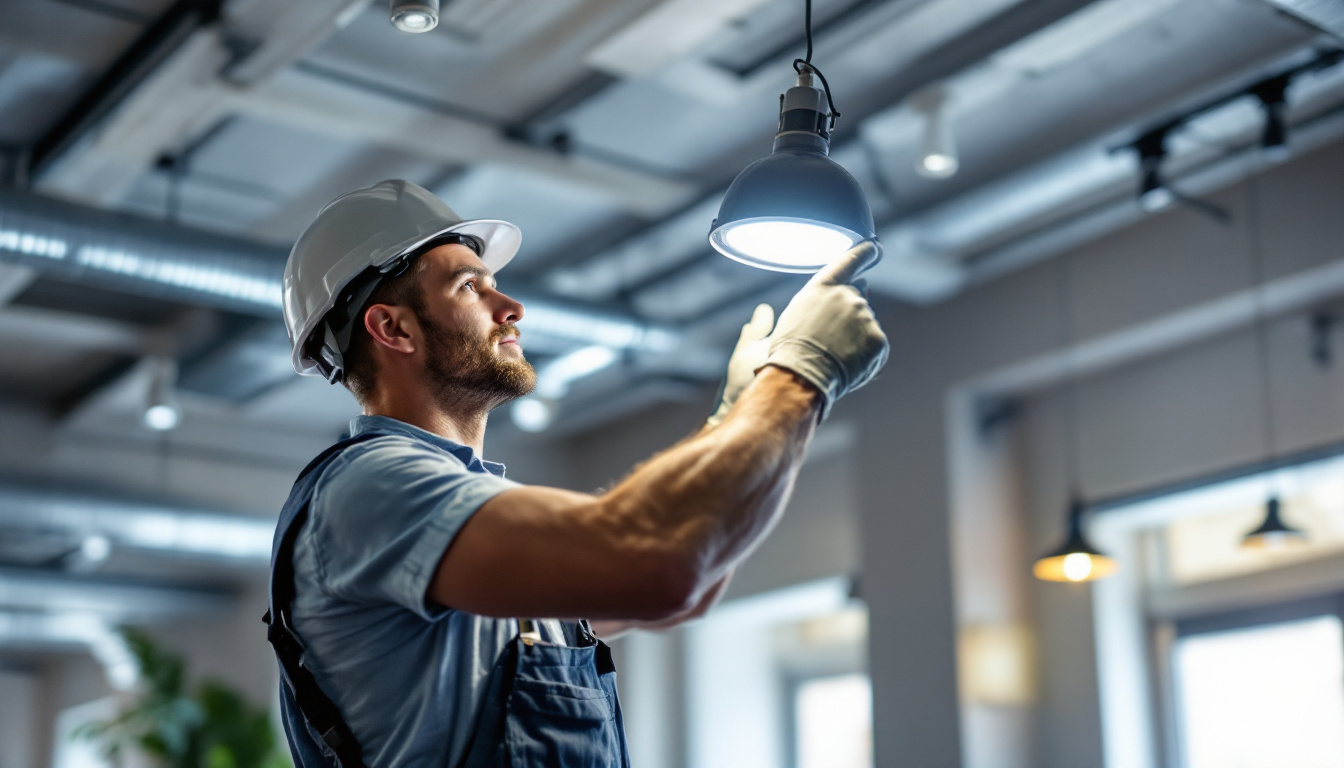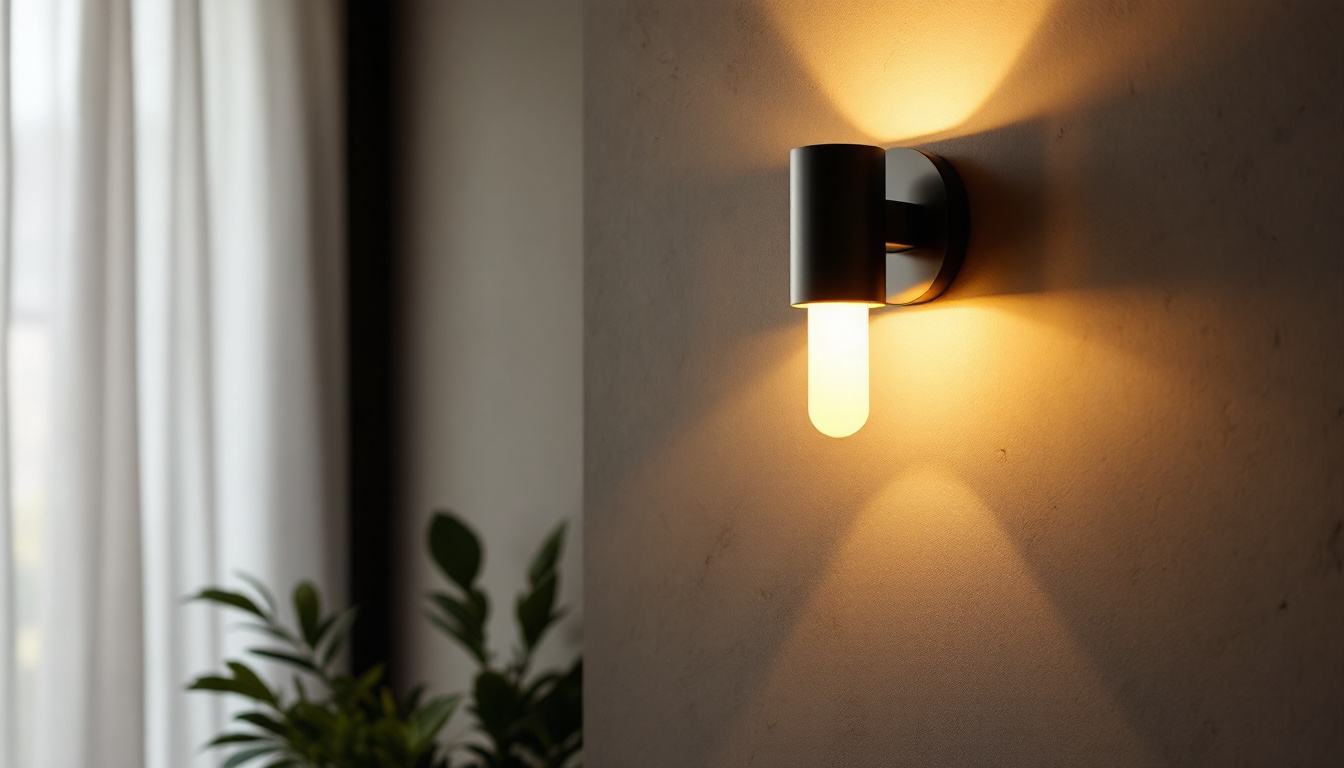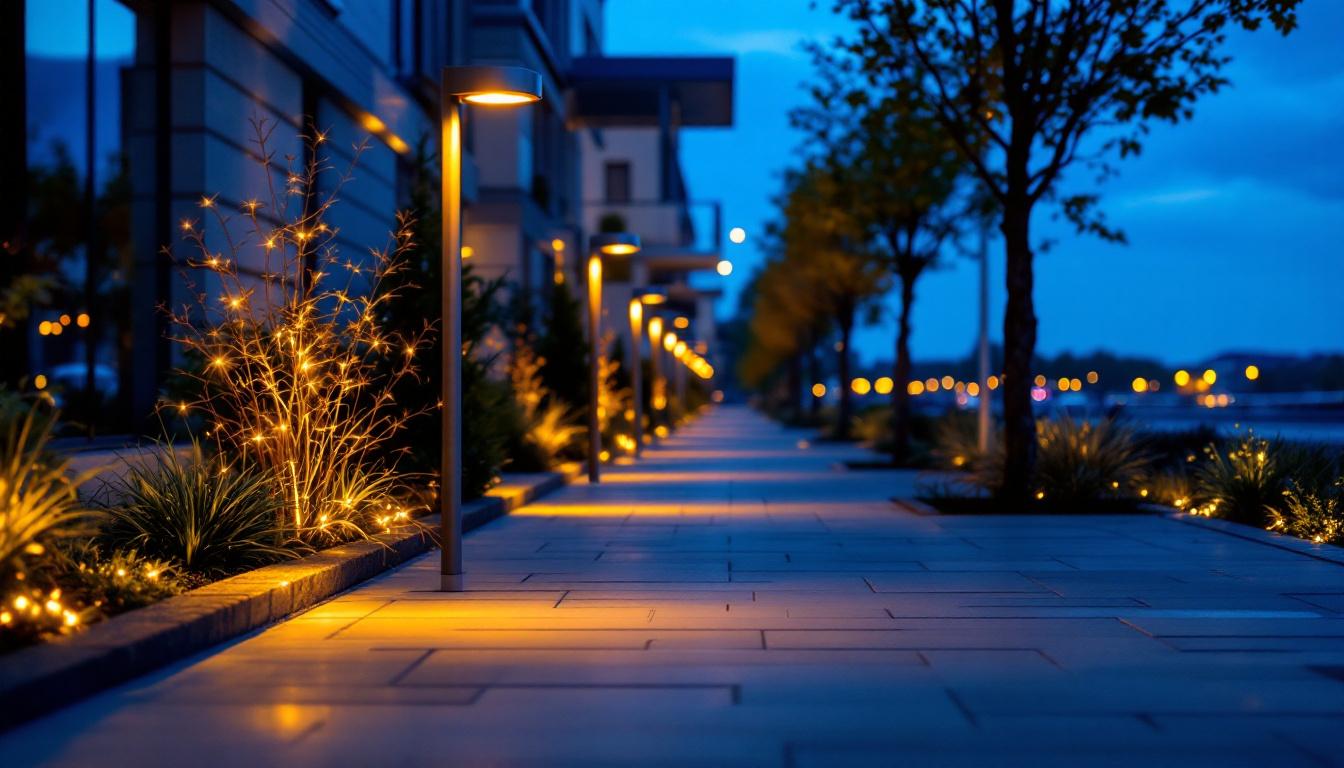
In the ever-evolving world of lighting design and installation, the demand for efficient and effective lighting solutions is paramount. For lighting contractors, understanding the nuances of wattage, particularly the 150-watt range, can significantly enhance project outcomes. This article delves into mastering tips that can elevate the expertise of lighting contractors, ensuring they deliver optimal lighting solutions for various applications.
The 150-watt category is often overlooked, yet it holds a unique position in both residential and commercial lighting applications. This wattage is particularly effective for providing ample illumination without overwhelming spaces, making it a versatile choice for contractors. The balance it strikes between energy consumption and light output is particularly appealing in today’s eco-conscious market, where efficiency is paramount.
150-watt fixtures are commonly used in a variety of settings, including outdoor spaces, retail environments, and even in some residential applications. In outdoor settings, these lights can effectively illuminate pathways, driveways, and landscaping, enhancing safety and aesthetics. For instance, strategically placed 150-watt floodlights can create a warm and inviting ambiance in gardens or patios, allowing homeowners to enjoy their outdoor spaces well into the evening hours.
In retail environments, 150-watt lighting can highlight products without creating harsh shadows, providing a welcoming atmosphere for customers. This wattage is particularly effective in showcasing merchandise in clothing stores, where the right lighting can influence purchasing decisions. Additionally, in residential spaces, these fixtures can serve as primary lighting sources in larger rooms or as accent lighting in smaller areas. For example, a 150-watt fixture can be used to spotlight artwork or architectural features, adding depth and character to a home’s interior design.
Lighting contractors should be familiar with the different types of 150-watt fixtures available in the market. Common options include LED floodlights, high-intensity discharge (HID) lights, and traditional incandescent bulbs. Each type has its own advantages and applications, making it essential to choose the right fixture based on the project requirements. Understanding the nuances of each type can greatly enhance the effectiveness of a lighting design.
LED floodlights, for instance, are energy-efficient and have a long lifespan, making them an excellent choice for outdoor installations. They not only consume less power but also emit less heat, making them safer and more sustainable. On the other hand, HID lights can produce a high lumen output, making them suitable for larger commercial spaces. Their ability to illuminate vast areas makes them a popular choice for parking lots and stadiums. Additionally, traditional incandescent bulbs, while less common in new installations due to their lower efficiency, can still be found in some vintage or decorative applications, providing a warm glow that many find appealing. As technology continues to advance, it’s important for contractors to stay informed about emerging options that may further enhance the 150-watt lighting spectrum.
In today’s environmentally conscious market, energy efficiency is a critical factor for lighting contractors. Understanding how to maximize the efficiency of 150-watt lighting can lead to significant cost savings for clients and enhanced sustainability. As energy costs continue to rise, the demand for energy-efficient solutions is more pressing than ever, prompting both residential and commercial clients to seek out options that not only reduce their carbon footprint but also lower their utility bills.
When selecting 150-watt lighting solutions, contractors must consider the type of bulb being used. LED bulbs, for example, consume significantly less energy than traditional incandescent or HID bulbs while providing the same or even greater illumination. This not only reduces energy costs but also decreases the frequency of bulb replacements, which can be a substantial advantage in terms of maintenance and labor costs. Additionally, the longevity of LED bulbs—often lasting up to 25,000 hours—means less waste in landfills, aligning with sustainability goals.
Moreover, many modern LED fixtures come with adjustable brightness settings, allowing for further customization based on specific needs. This flexibility can be particularly beneficial in settings where lighting requirements may change throughout the day. For instance, in an office environment, the lighting can be dimmed during meetings or brightened for collaborative work sessions, enhancing both comfort and productivity. Furthermore, the color temperature of LED bulbs can also be adjusted, providing options that can influence mood and energy levels, making them an ideal choice for various applications.
Incorporating smart technology into lighting systems can enhance energy efficiency and user experience. smart lighting solutions enable contractors to offer clients the ability to control their lighting remotely, set schedules, and adjust brightness levels based on occupancy or time of day. This level of control not only optimizes energy consumption but also allows for a more personalized lighting experience, catering to the specific needs of users at any given moment.
By integrating smart technology into 150-watt lighting systems, contractors can provide added value to their clients, making spaces more adaptable and energy-efficient. This not only meets the growing demand for smart home solutions but also positions contractors as forward-thinking professionals in the industry. Additionally, many smart lighting systems can be integrated with other smart home devices, creating a cohesive ecosystem that enhances overall energy management. For example, linking lighting with smart thermostats can lead to even greater energy savings, as users can automate their entire environment to work in harmony, further reducing energy consumption and promoting a sustainable lifestyle.
Proper installation is crucial for maximizing the performance of 150-watt lighting fixtures. Adhering to best practices ensures that the lighting operates efficiently and effectively, providing the desired results for clients.
One of the key considerations in the installation of 150-watt fixtures is their placement and spacing. Contractors should carefully assess the area to determine the optimal locations for fixtures to achieve even illumination. This is particularly important in larger spaces where shadows can create uneven lighting.
For outdoor installations, it’s essential to consider factors such as the height of the fixtures and the angle of illumination. Proper placement can enhance both functionality and aesthetic appeal, ensuring that the lighting serves its intended purpose.
Safety is paramount in any lighting installation. Contractors must ensure that all wiring is up to code and that fixtures are securely mounted. It’s advisable to use weather-resistant materials for outdoor installations to prevent damage from environmental factors.
Additionally, understanding the electrical load and ensuring that circuits can handle the wattage of the fixtures is critical. This not only prevents potential hazards but also ensures that the lighting system operates efficiently without overloading circuits.
Once installed, the longevity and performance of 150-watt lighting fixtures depend significantly on regular maintenance. Educating clients on maintenance practices can enhance the lifespan of their lighting systems and ensure consistent performance.
Dust and debris can accumulate on fixtures over time, diminishing their brightness and effectiveness. Regular cleaning is essential to maintain optimal performance. Contractors should advise clients on how to safely clean their fixtures, particularly for those installed in hard-to-reach areas.
In addition to cleaning, routine inspections are vital. Checking for any signs of wear or damage can help identify potential issues before they escalate, ensuring that the lighting system remains in good working order.
As technology advances, older lighting fixtures may become less efficient or effective. Contractors should stay informed about new products and technologies in the market, advising clients on when it may be beneficial to upgrade their lighting systems.
Upgrading to newer, more efficient fixtures can not only enhance the quality of light but also lead to significant energy savings over time. This proactive approach positions contractors as trusted advisors, helping clients make informed decisions about their lighting needs.
Effective communication with clients is essential for lighting contractors. Educating clients about their lighting options, including the benefits of 150-watt fixtures, can lead to more informed decisions and greater satisfaction with the final results.
Contractors should take the time to explain the advantages of 150-watt lighting to clients. Highlighting its versatility, energy efficiency, and suitability for various applications can help clients understand why this wattage is a valuable choice.
Additionally, discussing the long-term cost savings associated with energy-efficient options can further persuade clients to opt for 150-watt solutions. Providing clear, concise information empowers clients to make choices that align with their needs and values.
After the installation is complete, offering ongoing support can enhance client relationships. Contractors should be available to answer any questions or concerns that may arise, ensuring that clients feel supported throughout the lifecycle of their lighting systems.
This level of service not only fosters trust but can also lead to repeat business and referrals, as satisfied clients are more likely to recommend contractors who provide exceptional support.
The lighting industry is constantly evolving, with new technologies and trends emerging regularly. For lighting contractors, staying current with these developments is essential for maintaining a competitive edge.
Investing in continuing education and training can significantly enhance a contractor’s knowledge and skills. Workshops, online courses, and industry conferences provide valuable opportunities to learn about the latest advancements in lighting technology and design.
By staying informed, contractors can offer clients the most up-to-date solutions, positioning themselves as experts in the field. This commitment to learning not only benefits contractors but also enhances the overall quality of service provided to clients.
Networking with other industry professionals can provide valuable insights and opportunities for collaboration. Joining industry associations or participating in local trade shows can help contractors connect with peers, share knowledge, and stay informed about market trends.
These connections can also lead to potential partnerships, expanding the range of services that contractors can offer to clients. Building a strong professional network is a key component of success in the lighting industry.
Mastering the art of 150-watt lighting is essential for lighting contractors seeking to deliver exceptional results for their clients. By understanding the applications, energy efficiency considerations, installation best practices, and the importance of client education, contractors can position themselves as leaders in the industry.
Staying current with trends and investing in ongoing education will further enhance expertise, ensuring that contractors remain competitive in a rapidly changing market. Ultimately, a commitment to quality, efficiency, and client satisfaction will pave the way for lasting success in the world of lighting design and installation.
Ready to elevate your lighting projects with the expertise you’ve gained? At LumenWholesale, we’re here to support your journey to mastery with our extensive range of high-quality, spec-grade lighting products. Say goodbye to inflated markups and hello to unbeatable wholesale prices that put the power back in your hands. With our commitment to reliability and performance, you can trust that every fixture will meet the highest industry standards. Plus, with the convenience of free shipping on bulk orders, you can stock up on premium lighting solutions without any hidden fees. Don’t compromise on quality or value—choose LumenWholesale for the perfect blend of affordability and excellence. Wholesale Lighting at the Best Value is just a click away.

Discover the transformative impact of solar-powered garden lights for lighting contractors.

Discover how LED overhead light fixtures are transforming spaces through real-world success stories from lighting contractors.

Explore how choosing the right lighting stores for wall sconces can enhance your home’s energy efficiency.

Discover innovative strategies from smart lighting contractors as they illuminate urban landscapes with sidewalk LED lights.